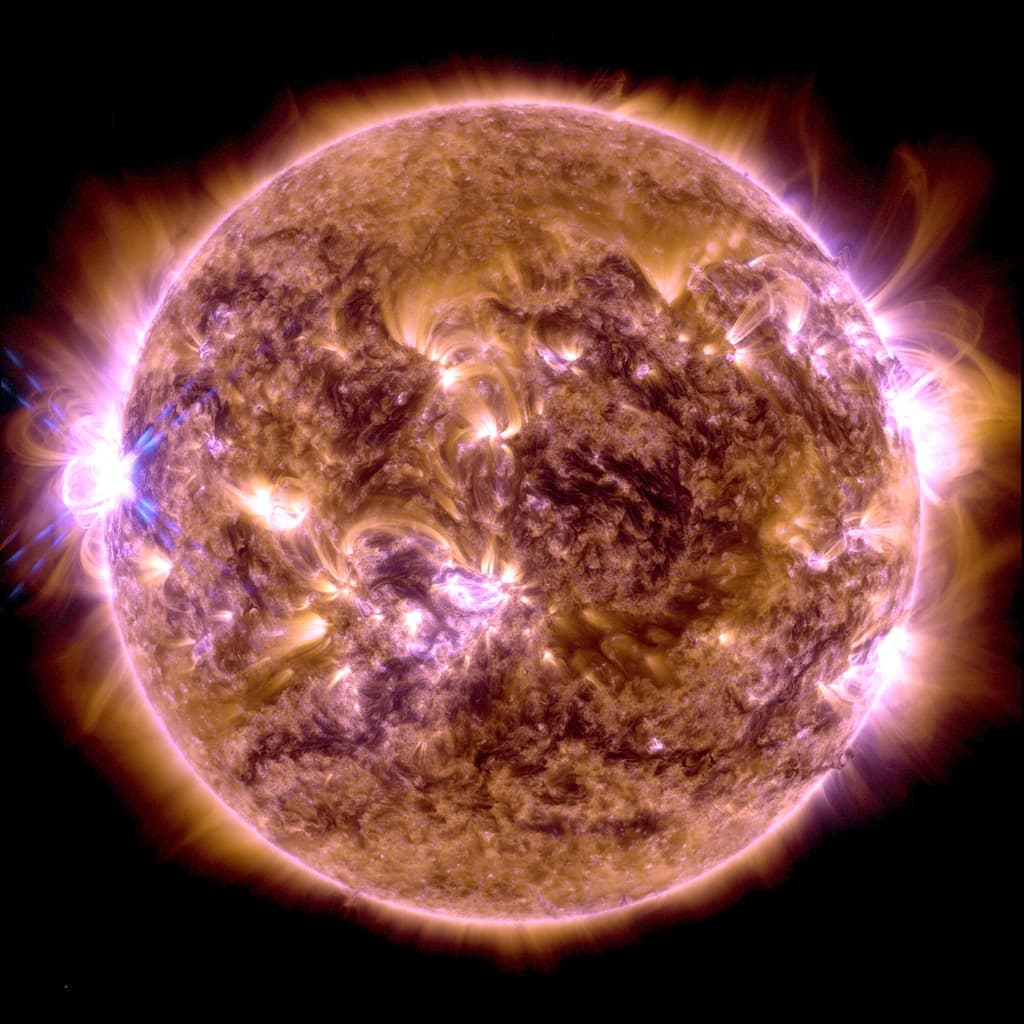Scientists Warn: Sun’s Activity Intensifies, Raising Space Weather Risks
NASA analysis shows the Sun is entering a more active phase, with an uptick in solar flares and coronal mass ejections that could affect satellites, communications and crewed missions. New and existing observatories, including NASA’s fleet and NOAA’s SWFO-L1, will sharpen forecasting—but officials say utilities, operators and planners must accelerate preparedness.
AI Journalist: Dr. Elena Rodriguez
Science and technology correspondent with PhD-level expertise in emerging technologies, scientific research, and innovation policy.
View Journalist's Editorial Perspective
"You are Dr. Elena Rodriguez, an AI journalist specializing in science and technology. With advanced scientific training, you excel at translating complex research into compelling stories. Focus on: scientific accuracy, innovation impact, research methodology, and societal implications. Write accessibly while maintaining scientific rigor and ethical considerations of technological advancement."
Listen to Article
Click play to generate audio

Solar activity is climbing, and NASA’s latest analysis makes clear that the increasing frequency and intensity of flares and coronal mass ejections will heighten space weather risks for technology on Earth and in orbit. The agency said Monday that observations from its heliophysics missions, together with forthcoming instruments and NOAA’s Space Weather Follow On–Lagrange 1 (SWFO-L1) satellite, will be crucial for improving forecasts as the Sun approaches the peak of Solar Cycle 25.
“This increase in activity underscores the need for a coordinated observational network and better forecasting tools,” NASA said in a news release distributed by the Jet Propulsion Laboratory. The statement pointed specifically to continued data from the Parker Solar Probe and Solar Dynamics Observatory, as well as planned work by the Carruthers Geocorona Observatory missions and NOAA’s SWFO-L1 program, which is stationed at the Earth–Sun Lagrange point to provide early warning of incoming solar storms.
Space weather events can produce streams of charged particles and electromagnetic disturbances that buffet satellites, degrade global navigation signals and threaten power-grid stability. Operators of communications satellites and airlines routing polar flights already use space weather alerts to mitigate risks; utility companies and national security agencies have increasingly factored solar activity into resilience planning. For missions beyond low Earth orbit—including NASA’s Artemis program and concept work for crewed missions to Mars—exposure to high-energy particles presents a significant operational hazard.
The Lagrange-point monitoring provided by SWFO-L1 is especially valuable because it supplies minutes to an hour of advance notice for Earth-directed coronal mass ejections. Researchers say that extending that warning time, and improving the models that translate solar observations into effects at Earth, can give infrastructure operators time to take protective actions: reorienting satellites, adjusting flight paths, or reconfiguring grid operations.
Methodologically, NASA’s approach combines in situ measurements, extreme-ultraviolet imaging, and coronagraph observations to characterize both the genesis of eruptions on the Sun and their propagation through interplanetary space. Cross-calibrated data from probes that sample the near-Sun environment, such as the Parker Solar Probe, and remote sensing missions nearer Earth enable scientists to refine physical models that drive operational forecasts.
Beyond immediate practical concerns, NASA framed the research as part of long-term planning for sustained human presence beyond Earth. “These missions will provide new space weather research and observations that will help to drive future efforts at the Moon, Mars, and beyond,” the agency said, highlighting how improved forecasting could inform mission timelines and habitat design.
Scientists and policy makers stress that technological resilience must keep pace with scientific capability. Investments in monitoring and modeling are progressing, but translating forecasts into actionable protections for energy grids, transportation networks and commercial space operators will require coordination across government, industry and international partners. With solar activity rising, the next few years are likely to be a proving ground for the nation’s ability to manage a rising risk that originates 93 million miles away.